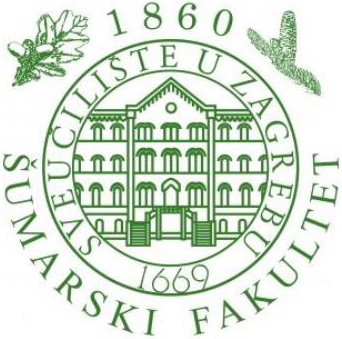The field trip will be held in two areas nearby Zagreb; the city of Jastrebarsko where Croatian Forest Research Institute is located with adjacent lowland forest JastrebarskiLugovi, and the city of Vrbovec with nearby Česma forest complex. The first part of the trip will include a tour to the Institute, a short introduction to the research facilities and laboratories. After that, visit to the nearby forest “Jastrebarskilugovi” with permanent field infrastructure (including carbon flux tower) and the current research activities are planned with guidance by the CFRI experts. The second part of the LCLCUC trip will include a visit to the city of Vrbovec, and a short introduction to historical and cultural values of the area. After that, tour in the nearby lowland riparian forest Česma is planned, guided by the Forest office managers and CFRI experts. Česma forest presents a specific long-term study area of the riparian forest-water relationships (long-term groundwater monitoring) and area of testing and exploration of the optimal "close to nature" silvicultural management practices. It presents a unique and successful example of restoration of the natural hydrologic regime in lowland Quercus robur forests.
Continental lowland forests in Croatia cover an area of more than 200,000 ha. They present the most significant complex of alluvial and riparian forests in Europe which is situated in the floodplain areas of the main country bordering rivers, Sava, Drava, and the Danube. The primary forest species is Quercus robur (Slavonian oak), well known for its high-quality timber (oak veneer), who reaches most considerable dimensions in this area due to the long vegetation season and availability of groundwater supply. The forests of both locations are actively managed for sustained timber in 140-year (oak) or 80-year (ash) rotations, ending with two or three regeneration feelings during the last ten years of the rotation. The principle of management is even-aged with the rotation of 130-160 years with regular thinning performing every ten years. Old forests are regenerated according to the principle of “close to natural” shelterwood system by performing three consecutive cuts at the age of 120 years.
The map of the trip:
Field trip Agenda:
8.00 Departure from the Faculty of Geodesy (hotel)
9.00 Croatian Forest Research Institute, CFRI, Jastrebarsko – visit (director dr.sc. Dijana Vuletić)
10.30 Jastrebarskilugovilowland forest:
- Permanent research station - carbon flux measurements (Eddy covariance tower)
dr.sc. Hrvoje Marjanović, CFRI
- Forest inventory using remote sensing, lidar &aero photoapproaches – Validation forest area of HORIZON 2020 MySustainableForests project& Croatian science foundation HRZZ
dr.sc. Ivan Balenović, CFRI
12.30 City of Vrbovec – Museum and Forest office
14.00 Česma lowland forest – riparian forest restauration area - lunch (sponsored by Croatian Forests, Vrbovec Forest Office)
- Forest management practices – Željko Gubijan, Office Manager, Croatian Forests Ltd.
- Riparian forest vegetation and Natura2000 in Croatia – dr.sc. Jasna Medak, CFRI
- Forest and water management practices in Croatia – dr.sc. Ivan Pilaš, CFRI
18.00 Return to Zagreb
Recommended field clothes, raincoats, hiking shoes.
Water will be available in the bus.
|















